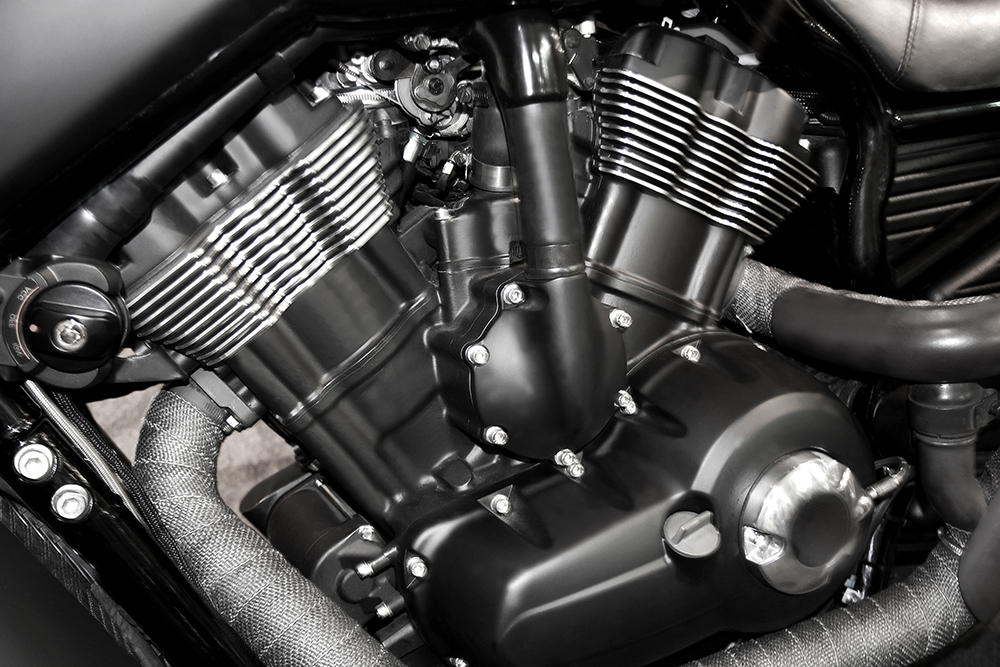When you can’t get your vintage two-stroke motorcycle engine running smoothly after checking the ignition timing and carburetion, it’s possible that you have leak. As the piston rises, it compresses the fuel and air. At the top of the stroke, the spark plug lights the compressed mixture, increasing the pressure and driving the piston downward and rotating the crankshaft. The rising piston cannot create enough vacuum to pull the incoming fuel charge into the crankcase or generate enough pressure to properly drive the fuel charge into the combustion chamber. When leaks are present, they cause the engine to pull too much air and run lean, potentially causing piston seizure. Leaks can occur at the cylinder head, cylinder base, crankshaft seals, and intake manifolds. To find your leak and get your bike running right, the next step is to find your leak by performing a leak-down test.
The test involves pressurizing the engine block to 7psi to observe how it holds pressure. Be careful not to exceed 10 psi or you run the risk of blowing seals. If your bike loses pressure after it has been running for two minutes, it’s likely that you have a leak. Prepare for the test by removing the carburetors and, when necessary, the gas tank. Use the existing flange to plug the exhaust port, or pick up an expanding rubber freeze plug from the auto parts store to create a good seal. Once the exhaust side is locked up tight, plug the intake side. There are kits available that contain a variety of plugs, fittings, and hoses that incorporate features made to perform the test. Threaded aluminum plugs are fitted for the exhaust and intake sides, with accommodations for fittings to pressurize the engine. Using a pressure gauge attached to a squeeze bulb, raise the engine pressure to 7psi and wait for two minutes to see if the pressure drops. If the pressure drops, you have a problem. Supply a steady flow of air to the engine to find the source of the leak. Attach a pressure regulator to an air compressor and dial it down to zero. Bring the pressure to 7psi and check for leaks in the intake manifolds, cylinder heads, and the cylinder base. Mix a little dish soap with water in a spray bottle and soak the area before you perform your test. Once you pressurize the engine, look for soapy bubbles in the area of the leak. Check each area of the engine, and identify each leak. When it’s time to make your repairs, replace all the gaskets and seals for every engine component in your repair. Carefully remove the old gasket, using a gentle abrasive to clean the surface of stuck gasket material and old sealant. Clean all mating surfaces, install your new gaskets and seals, and get your bike back on the road.
Gasket King is a family-owned company that is dedicated to building the largest database of replacement motorcycle engine gaskets for vintage motorcycles. We have the ability to custom fabricate any gasket from American-made composite fiber that meets or exceeds OEM specifications. Send us your old gaskets, or a detailed tracing with measurements and we’re on it. Each of our gaskets is made in the U.S. and carries our 100% satisfaction guarantee. Call 817.562.8178 or shop our selection of in-stock gaskets, today.


